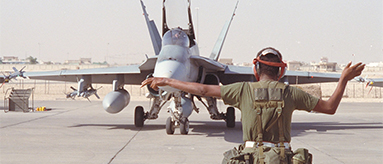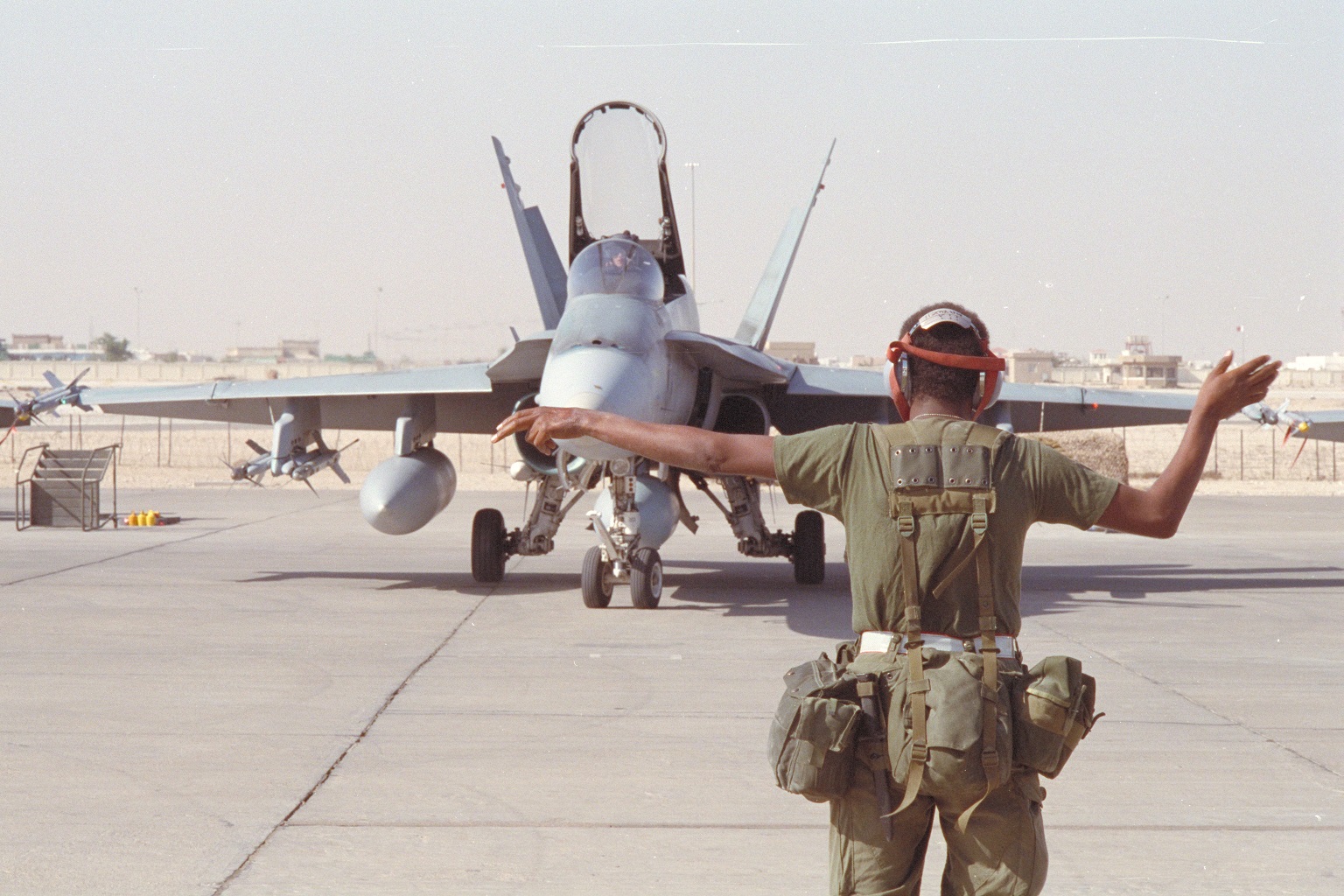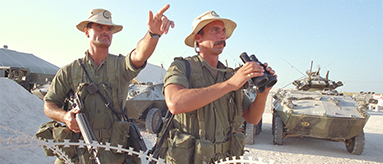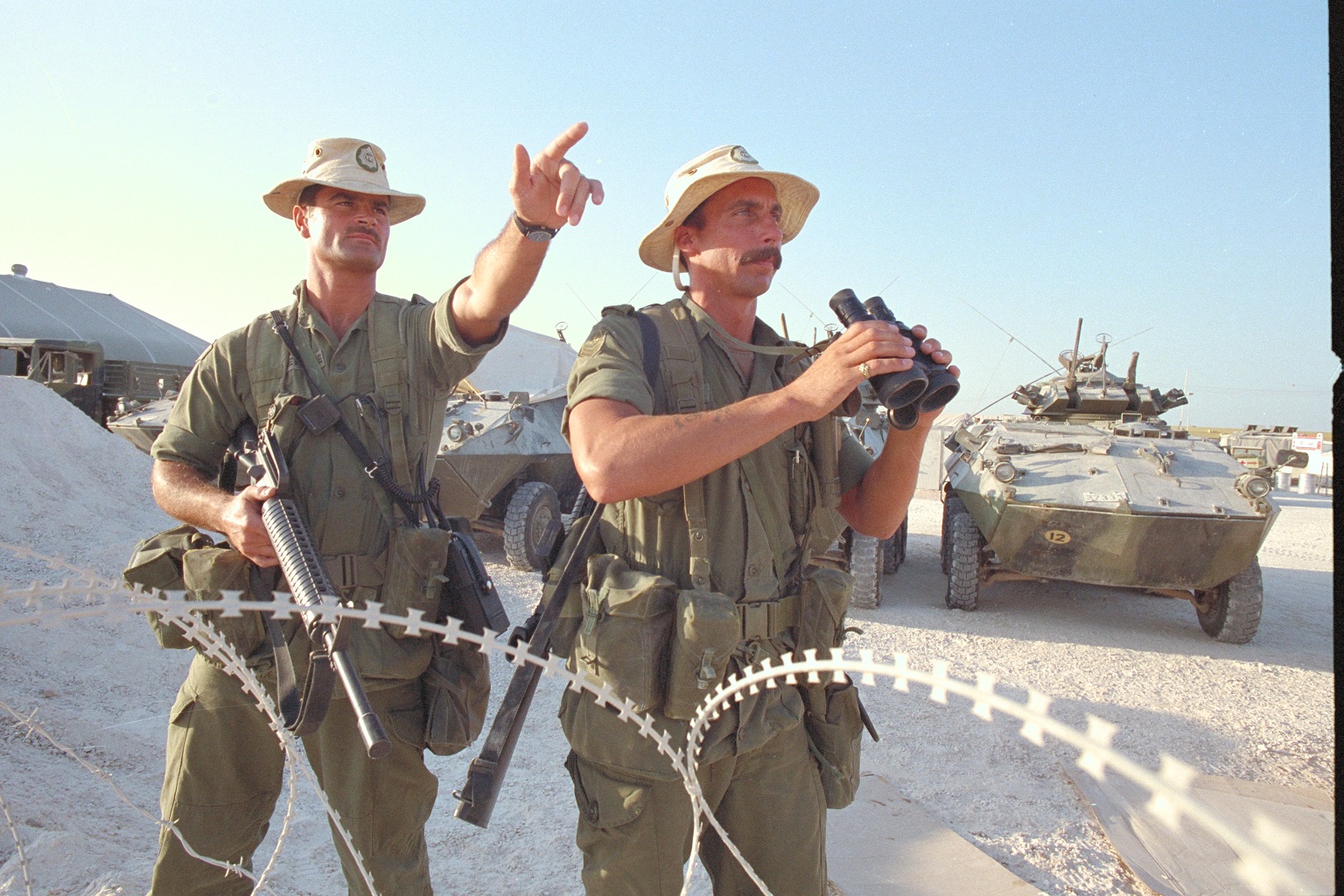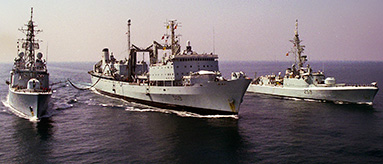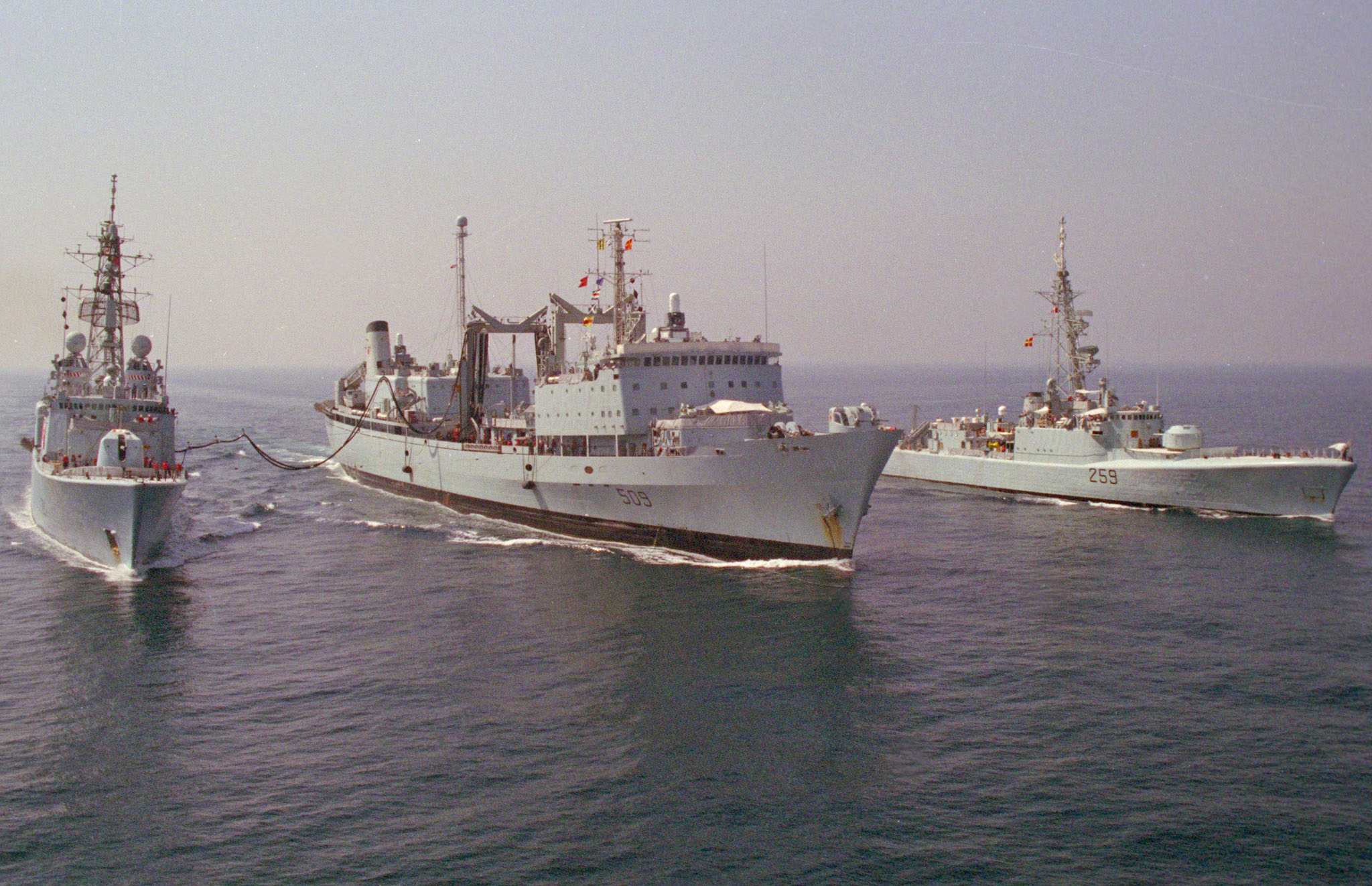The Canadian Armed Forces and the Gulf War
Introduction
This publication is available upon request in alternate formats.
PDF Version
The Gulf War of the early 1990s was a struggle that is well-known to many. More than 4,000 Canadian Armed Forces members served in the Persian Gulf region in 1990-1991 as part of the international Coalition of countries that came together to drive the invading forces of Iraq out of Kuwait. In the aftermath of the conflict, Canadians would continue to serve with peacekeeping and embargo-enforcement efforts in the region for several years.
The Persian Gulf
Iraq and Kuwait are Arab countries located next to each other in the heart of the oil-rich Middle East, a region of the world steeped in history. In fact, many historians would say that human civilization itself was born in the “Fertile Crescent”–the land between the Tigris and Euphrates Rivers in modern-day Iraq.
In the 20th century, both Iraq and Kuwait achieved independence. The relationship between the two countries, however, has not been smooth. Iraq had long felt that Kuwait was really a part of Iraq and that Kuwaiti oil rigs were illegally tapping into Iraqi oil fields. In the late 1980s, tensions grew and relations became much worse. On August 2, 1990, the situation came to a head when Iraqi forces invaded Kuwait, quickly taking control of its much smaller neighbour.
The world responds
Many in the international community condemned Iraq's bold act of aggression and Canada soon joined a 35-country, American-led multinational Coalition to restore freedom to Kuwait. Functioning under the mandate of a United Nations (UN) resolution that approved the use of force, Operation Desert Shield saw the build-up of Coalition forces in the Gulf region. The Canadian Armed Forces participation in the military efforts there would be codenamed Operation Friction.
Canada's first military contributions came at sea in August 1990, when three of our warships sailed to the Persian Gulf to be part of a Coalition fleet that would secure the waters off Iraq and occupied Kuwait. Canadian CF-18 warplanes were sent to the Middle East in October 1990 to help take control of the skies above the Gulf. A joint headquarters for the Canadian Armed Forces in the region was also established in Manamah, Bahrain in November 1990. Canadian medical, communications, logistical and security units would also bravely play support roles in the Gulf War.
On January 16-17, 1991, Operation Desert Storm began as Coalition forces launched a devastating air campaign after a final deadline for Iraq's withdrawal was ignored. This was followed by an armoured and infantry ground offensive that commenced on February 24 which rapidly pushed the Iraqis out of Kuwait. This fulfilled their mandate to liberate Kuwait, and Coalition forces ceased the offensive on February 28 and offered a cease-fire which Iraq accepted on March 3. The end of the war left Iraq defeated but the country's leader, Saddam Hussein, retained power. He would remain in control of Iraq for more than 12 years until the second Gulf War of 2003 finally swept him from power.
After the Gulf War ended, Canadian troops remained in the region as part of the UN peacekeeping mission along the Iraq-Kuwait border, monitoring the demilitarized zone between the two countries, investigating cease-fire violations and clearing land mines. Canada also had a role in the years that followed in the special commission to seek out Iraq's biological, chemical and nuclear weapons production facilities. On the water, Canadian warships helped to enforce the economic sanctions that had been imposed on Iraq after the conflict.
Facts and figures
- The fact that Iraq possessed chemical and biological weapons, as well as large missiles that could be used to attack neighbouring countries, made the entire region very tense in 1990-1991.
- The peak number of Canadian Armed Forces members in the Persian Gulf region at one time was some 2,700 personnel.
- The Canadian Naval Task Group–consisting of the destroyers HMCS Terra Nova and HMCS Athabaskan, and the supply ship HMCS Protecteur–helped support the Coalition fleet efforts in the region. Five Sea King helicopters with No. 443 Squadron were also part of this force.
- CF-18 jet squadrons with approximately 500 personnel operated out of the ‘Canada Dry' bases in the Persian Gulf nation of Qatar, performing combat air control, escort and reconnaissance missions. For the first time since the Korean War, Canadian air-to-surface attacks took place during the conflict.
- The Canadian Air Command's Transport Group carried personnel and cargo in the region. One of the Canadian planes was used in aerial refueling duties for Coalition air forces.
- A Canadian field hospital with 530 personnel was established in Al-Qaysumah, Saudi Arabia in February 1991. This hospital cared for both Coalition and Iraqi wounded.
- Soldiers from units like the Royal Canadian Regiment and the Royal 22e Régiment performed security duties at Canadian installations in the Middle East in 1990-1991.
Heroes and bravery
On a hot afternoon in Kuwait City, an overheated Coalition convoy truck caught fire suddenly, setting off a series of explosions that injured many American soldiers. Captain Fred Kaustinen, acting commander of Canada's 1st Combat Engineer Regiment, and 50 of his troops took immediate action, providing emergency treatment and evacuation for the wounded.
The Gulf War marked the first time that female Canadian Armed Forces members performed combat duties. It was especially challenging for these trail-blazing women because they were serving in conservative Middle Eastern countries where traditional gender roles are very different than in Canada.
HMCS Athabaskan took part in a tense mission in February 1991, when the ship went to the aid of the USS Princeton, which had been seriously damaged by Iraqi mines off the coast of Kuwait. Keeping a vigilant watch while crossing hundreds of kilometres of dangerous waters and navigating through enemy minefields, Athabaskan escorted a Coalition fleet tugboat that would safely extract the American warship.
Sacrifices
Theatres of war, like the Persian Gulf in the early 1990s, are dangerous places. There are many risks that go beyond the obvious ones of enemy attack or landmines. Friendly fire incidents, vehicle accidents and the psychological impact of serving in such stressful conditions can take a heavy and life-long toll. Debilitating medical conditions have struck some Veterans of the Gulf War, including symptoms like chronic fatigue, respiratory complaints and muscular pain.
Fortunately, no Canadian Armed Forces members died in the course of the Gulf War. A total of more than 1,800 Canadians have died in military service in the post-war years, however. Their names are inscribed within the beautiful In the Service of Canada Book of Remembrance that is displayed in the Peace Tower on Parliament Hill in Ottawa.
Canada Remembers Program
The Canada Remembers Program of Veterans Affairs Canada encourages all Canadians to learn about the sacrifices and achievements made by Canada's Veterans during times of war, military conflict and peace, and to become involved in remembrance activities that will help to preserve their legacy for future generations of Canadians.
- Date modified:
